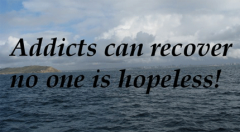In America, it is very common for a family to have at least one loved one who struggles with some kind of drug addiction. Sometimes times the families of the addict are the ones who suffer the most and the children feel the repercussions more than anyone.
More than 8 million children live with and are impacted by a parent or family member who is addicted to drugs or alcohol. Statistics from drugrehab.us show that 14% of these children are under the age of 2, 12% are ages 6 to 11, and 10% are 12 to 17 years old. The website also presents some more shocking figures about these children and how they suffer from drug addiction (Parental Drug Addiction).
Child abuse and neglect: It’s been estimated that up to two thirds of children that have been mistreated involve some kind of addiction. There is a huge difference in the rates of abused and neglected children living in a home with an addicted parent or parents than children who do not. Children with addicted parents are 3 times more likely to be abused and 4 times more likely to be neglected (Parental Drug Addiction).
Developmental and mental health issues: Children living with a parent’s drug use is more likely to have behavioral issues. These children are also at a higher risk of developing depression and anxiety (Parental Drug Addiction).
Next generation substance abuse: Researchers have found a link between a parent’s drug addiction and a child most likely to grow up with a drug addiction and problems getting a good education, getting a job, and living a normal life (Parental Drug Addiction).
I was raised by an alcoholic father who is addicted to prescription pain medications. His addiction eroded his ability to care for me and my two younger siblings so I had to care for ourselves quite often. His pill addiction and alcoholism came first instead of paying our bills or buying us food. If we made too much noise while he was in pain or hung over, we were punished with physical abuse. Living with my father was like walking on egg shells. After years of suffering from the traumatic effects of my father’s addictions, I found myself turning to alcohol at the age of fourteen as a means of escape.
My father’s addiction left our family constantly in poverty. My mother did her best to try and keep a roof over our heads but the addiction crippled us financially. According to Forbes.com (2012), an article called “The Cost of Addiction on Families” describes other costs associated with addiction:
• Missed or lost work or inability to find a job due to the addiction
• Increased car, health, life and other insurance premium costs
• Loss of income due to not graduating high school, college or obtaining an advanced degree
• Medical costs; many addictions cause health problems that can add up to massive costs throughout a person’s lifetime
• Legal bills; DUIs and other legal problems can often result from addictions, and the subsequent legal costs can be staggering (Borsari, 2012).
My experience happens to many children around the world and although it may not sound positive, it taught me to be a very strong and independent individual. I could have followed my father’s footsteps, but instead I chose to break the viscous cycle of addiction so my child would not suffer like I did.
References
Borsari, Jessica. (2012, June 19). The cost of addiction on families. Forbes. Retrieved on February 19, 2017, from http://www.forbes.com/sites/moneywisewomen/2012/06/19/the-cost-of-addiction-on-families/#4215dea5ada4
Cruz, Deborah. (2011, July 11). digital image. Retrieved from http://www.motherhoodthetruth.com/surviving-child-abus/
Drug addiction and recovery. (n.p.). (n.d.). digital header page image. Retrieved on March 8, 2017, from http://picphotos.net/drug-addiction-addiction-recovery-recovering-addicts-quotes/
Happy people jumping. (n.p) (n.d). digital header page image. Retrieved on March 8, 2017, from http://picphotos.net/drug-addiction-addiction-recovery-recovering-addicts-quotes/
McCarthy, Kevin (2017, February 14). digital homepage image. Retrieved from https://www.nuemd.com/news/2017/02/14/making-prescription-drugs-safer-with-health-medication-adherence
Parental drug addiction and its destructive impact on children. (n.p.). (n.d.). drugrehab.us. Retreived on April 27, 2017, from http://www.drugrehab.us/news/parental-drug-addiction-children/

